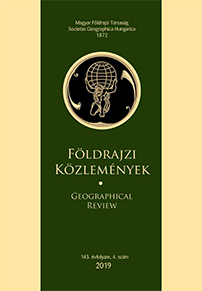Spatial Differences and Changes of Human Impacts on Hungarian Landscapes Based on Land Cover Class Data and Soil Diagnostics
Abstract
Since the beginning of landscape research there has been an intent to express and compare the grade of anthropogenic transformation, or even the naturalness of landscapes, by applying objective landscape analytical methods. The most preferred indicator for this kind of landscape study is the state of vegetation or ecosystems. In our study land cover classes and their influences on soil properties were applied to characterize the grade of anthropogenic transformation and their temporal changes in Hungarian micro- and mesoregions. Based on our results, we could point to the spatial extent and differences among micro- and mesoregions, how far they are affected by ongoing abandonment and the extensification of land use and soils, as well as the localization of well-known and widely studied soil- and landscape degradation processes as a consequence of urban and industrial sprawl and intensive agriculture.
Copyright (c) 2020 Tibor Novák, Szabolcs Balogh, József Incze

This work is licensed under a Creative Commons Attribution-NonCommercial-NoDerivatives 4.0 International License.



